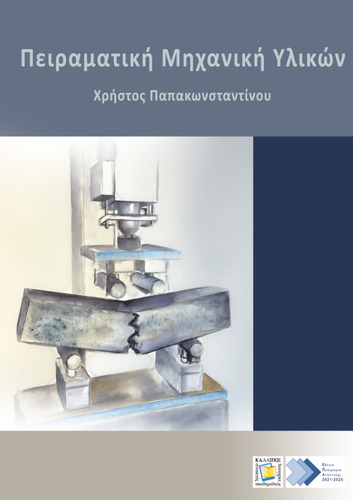| Title Details: | |
|
Experimental Mechanics of Materials |
|
| Authors: |
Papakonstantinou, Christos |
| Subject: | ENGINEERING AND TECHNOLOGY > TECHNOLOGICAL SCIENCES AND ENGINEERING > MATERIALS TECHNOLOGY AND ENGINEERING > METHODS FOR THE CHARACTERIZATION OF MATERIALS ENGINEERING AND TECHNOLOGY > TECHNOLOGICAL SCIENCES AND ENGINEERING > MATERIALS TECHNOLOGY AND ENGINEERING > MATERIAL RESISTANCE ENGINEERING AND TECHNOLOGY > TECHNOLOGICAL SCIENCES AND ENGINEERING > MATERIALS TECHNOLOGY AND ENGINEERING > TESTING OF MATERIALS ENGINEERING AND TECHNOLOGY > TECHNOLOGICAL SCIENCES AND ENGINEERING > MATERIALS TECHNOLOGY AND ENGINEERING > STRUCTURES AND PROPERTIES OF MATERIALS ENGINEERING AND TECHNOLOGY > TECHNOLOGICAL SCIENCES AND ENGINEERING > CONSTRUCTION TECHNOLOGY AND ENGINEERING > STRUCTURAL ENGINEERING ENGINEERING AND TECHNOLOGY > TECHNOLOGICAL SCIENCES AND ENGINEERING > MATERIALS TECHNOLOGY AND ENGINEERING > MATERIAL PROPERTIES ENGINEERING AND TECHNOLOGY > TECHNOLOGICAL SCIENCES AND ENGINEERING > CONSTRUCTION TECHNOLOGY AND ENGINEERING > CONCRETE |
| Keywords: |
Experimental Mechanics
Materials Mechanics Mechanical properties Material characterization Μeasurements Experiments Experimental equipment |
| Description: | |
| Abstract: |
This book focuses on the Experimental Mechanics of Materials, with an emphasis on structural materials. It is intended for undergraduate students at Greek-speaking higher education institutions. Although primarily aimed at civil engineering students, it can also be useful for students in other engineering disciplines. The purpose of the book is to provide readers with fundamental knowledge of both the mechanics of materials and the main experimental techniques and methods used for material characterization. The book consists of five chapters. Chapter 1 offers a brief introduction to Experimental Mechanics and a historical review of significant researchers who contributed to both Experimental and Theoretical Mechanics of Materials. Chapter 2 presents the basic principles of the Mechanics of Materials theory. It specifically covers stress-strain concepts and the fundamental theories of mechanics, such as tension, compression, bending, and torsion. Chapter 3 provides a detailed description of the main experimental equipment. It includes schematic descriptions of each sensor's operation, usage examples, and discussions on the advantages and disadvantages of their use. In Chapter 4, the main experiments used for material characterization are presented. Finally, Chapter 5 features audio-visual material related to the experimental setups and methods discussed in Chapter 4. The aim of the presentation of this material is to enhance the understanding of the experimental process.
|
| Linguistic Editors: |
Chioti, Alexandra |
| Graphic Editors: |
Tsakmaki, Eleni |
| Type: |
Undergraduate textbook |
| Creation Date: | 28-06-2024 |
| Item Details: | |
| ISBN |
978-618-228-26-5-6 |
| License: |
Attribution - NonCommercial - ShareAlike 4.0 International (CC BY-NC-SA 4.0) |
| DOI | http://dx.doi.org/10.57713/kallipos-1009 |
| Handle | http://hdl.handle.net/11419/13661 |
| Bibliographic Reference: | Papakonstantinou, C. (2024). Experimental Mechanics of Materials [Undergraduate textbook]. Kallipos, Open Academic Editions. https://dx.doi.org/10.57713/kallipos-1009 |
| Language: |
Greek |
| Consists of: |
1. History of Mechanics 2. Basic theory of Mechanics 3. Experimental equipment 4. Experiments for determination of mechanical properties of materials 5. Multimedia content |
| Number of pages |
248 |
| Publication Origin: |
Kallipos, Open Academic Editions |
| You can also view | |
| User comments | |
There are no published comments available! | |

